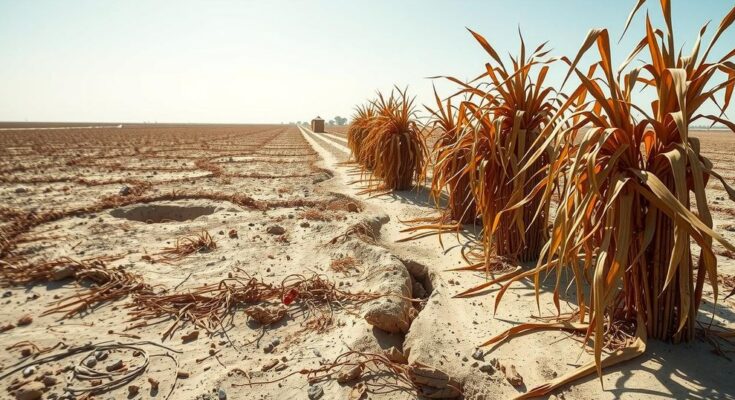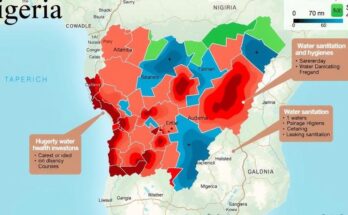Brazil’s sugarcane production may decline in the 2025/26 harvest due to inappropriate rainfall and ongoing drought. Predictions vary, with some analysts suggesting a modest decline while others express greater pessimism. Key factors affecting productivity include poor sprouting conditions and inadequate growth, particularly in severely impacted regions such as Jaú and Ribeirão Preto.
Currently, the agricultural landscape for Brazil’s sugarcane crop faces significant challenges due to dry weather conditions. A recent lack of rainfall in February and early March has intensified concerns regarding the already strained situation stemming from the 2024 drought. Predictions about the 2025/26 harvest, which begins in April, indicate a variety of outcomes, fueling uncertainty among producers and traders alike.
During a recent event in Ribeirão Preto, consultancy Datagro estimated sugarcane production at approximately 612 million tonnes for the upcoming season—a 1.4% decrease compared to the current year. Conversely, some analysts foresee a more optimistic scenario with a projected yield of 630 million tonnes, granted the rainfall accumulations remain favorable. However, there is caution; should the weather remain dry through the March to May period, output could suffer.
In stark contrast, trading firm Sucden has adopted a more conservative stance. Senior trader Ulysses Carvalho suggested that a realistic production estimate for the Center-South would fall between 590 million and 600 million tonnes. Furthermore, industry leaders share deep concerns about the possible declines in yield, with José Guilherme Nogueira, president of Orplana, anticipating at least a 15% reduction based on industry discussions.
The core issues affecting productivity stem from impaired sprouting and sluggish growth rates, particularly in regions impacted by wildfires. Azael Pizzolato Júnior, owner of Ipê Agrícola, highlighted crop failures in ratoon fields, necessitating replanting efforts. Additionally, alternative crops like peanuts, grown alongside sugarcane, have also suffered under current drought conditions.
Particularly severe impacts are visible in Jaú, São Paulo, where inadequate rainfall has hindered plant growth considerably. Eduardo Romão, presiding over the Jaú Sugarcane Growers Association, reported that at the customary growth assessment period in January, many plants were stagnantly underdeveloped. As a consequence, he predicted a notable 25% reduction in productivity.
The microregions of Ribeirão Preto and Araçatuba have suffered extensive damage, with February rainfall levels dropping significantly below historical averages. While regions like Piracicaba have witnessed less detrimental effects, the overall forecast remains somber. According to Datagro, water levels in soil storage still appear adequate in various regions, yet they are not as robust as last year.
Moving forward, Datagro’s assessment indicates that lower productivity levels will likely impact the initial part of the harvest due to several factors, including poor sprouting and reduced growth. The subsequent phases, however, may stabilize, largely contingent upon April’s rainfall outcomes.
In summary, Brazil’s sugarcane industry is confronting a precarious situation with projections indicating potential declines in the upcoming 2025/26 harvest due to ongoing drought and insufficient rainfall. While some analysts remain hopeful for recovery, contrasting views from industry leaders exemplify a climate of uncertainty. The extent of these adverse effects on the yield largely hinges on forthcoming weather conditions during critical growth periods.
Original Source: valorinternational.globo.com




